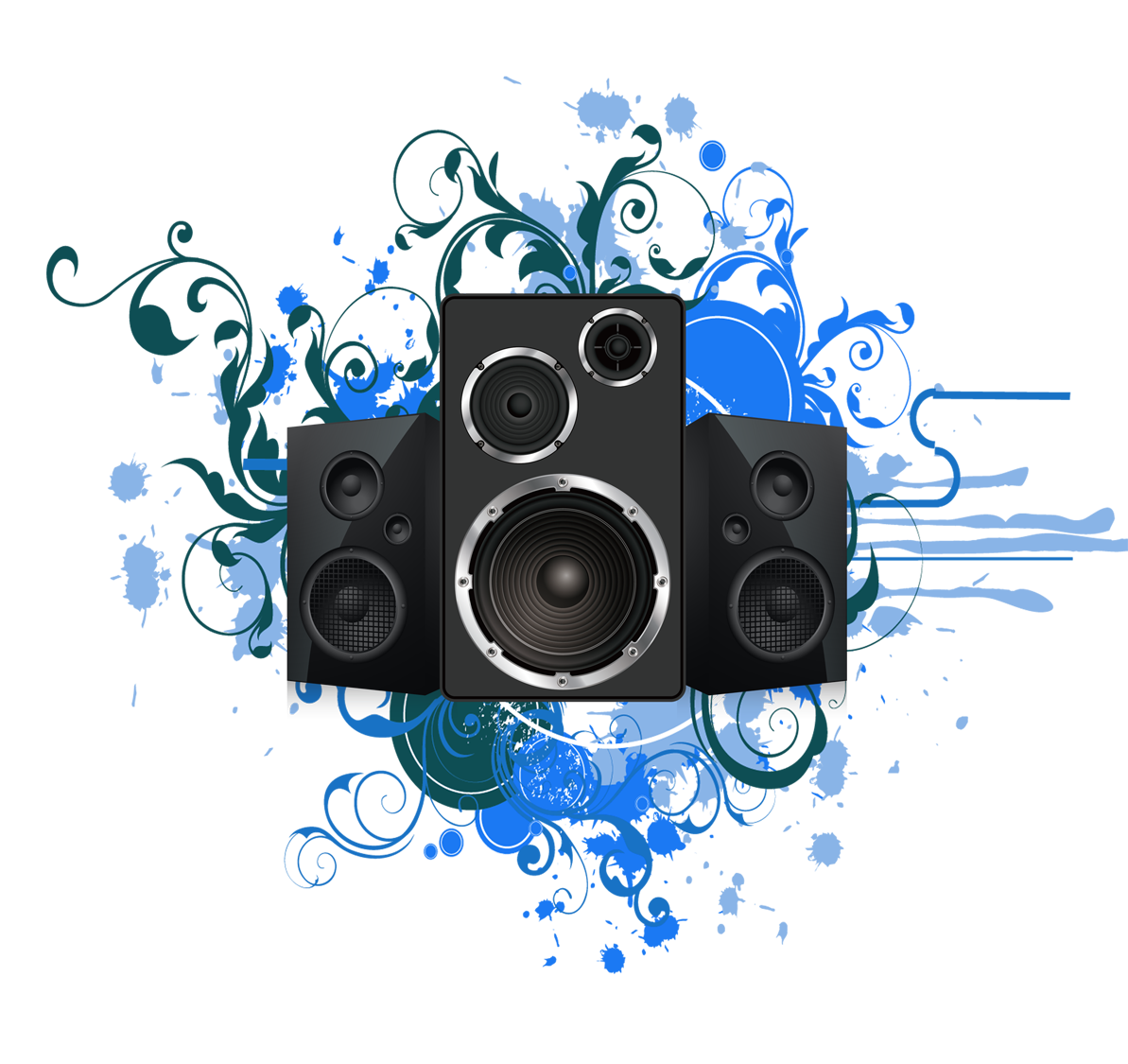Введение
Что такое «скалер»? Строго говоря «scaler» – это преобразователь масштаба. Его задача привести полученный телевизионный сигнал к формату матрицы. Видимо также, как когда-то словом «транзистор» называли радиоприемник, собранный на транзисторах, так и в этом случае скалер дал название всему устройству. А на плате устройства кроме процессора, обеспечивающего масштабирование изображения расположены так же ТВ-тюнер, усилитель низкой частоты и ряд других вспомогательных микросхем и узлов.
Приобрел я скалер ITV.V29.031. Его фото представлено на рисунке (Рисунок 1).

Рисунок 1. Скалер ITV.V29.031
Внимание! Скалер проблемный! Поищите в Интернете другую модель, о которой хорошо отзываются пользователи. Эта же модель, а именно ITV.V29.031, практически не обеспечена информационной поддержкой
Я по крупицам собирал о ней информацию, чтобы заставить работать. Но об этих проблемах позже. Сразу скажу, что в итоге все проблемы были преодолены и получилось вот такое устройство (Рисунок 2).
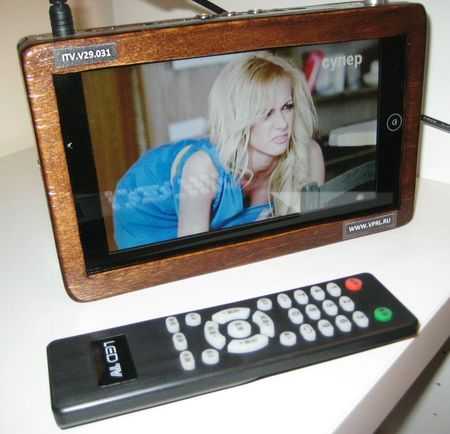
Рисунок 2. Внешний вид телевизора.
Демонстрационный видеоролик:
Как подключить к монитору или другой ЖК-панели
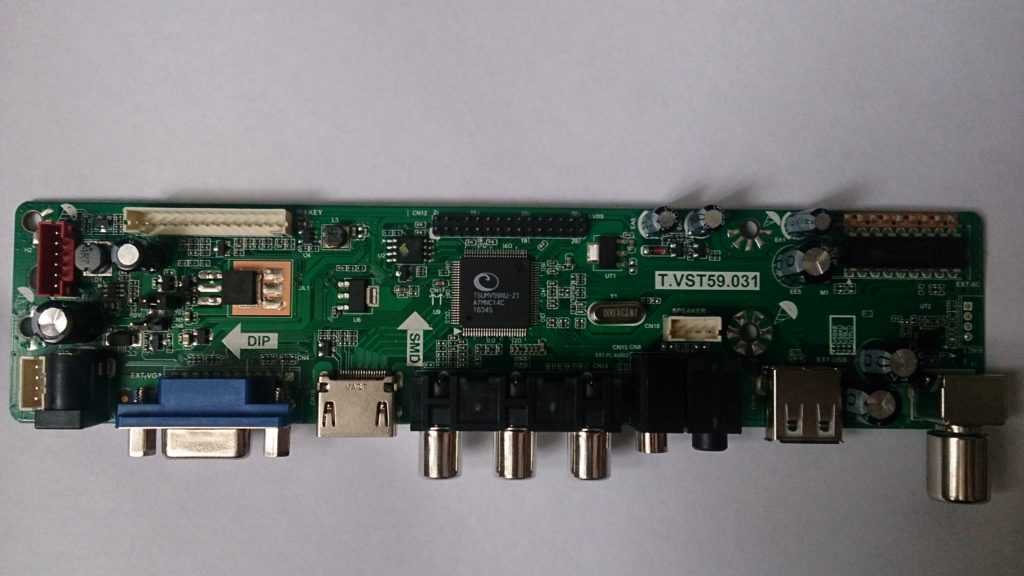
Для подключения скалера нужно заранее подготовить монитор, освободив его от всей «начинки», оставив только матрицу и подсветку. После того, как монитор будет разобран, необходимо разместить универсальную майн-плату таким образом, чтобы ее разъемы совпали с разъемами на корпусе ЖК-панели. Перед размещением детали на места, где ранее крепилась старая электроника, можно надеть пластиковые наконечники для изоляции. Далее следует правильно соединить все контакты матрицы с новой деталью, согласно инструкции, которая есть в комплекте.
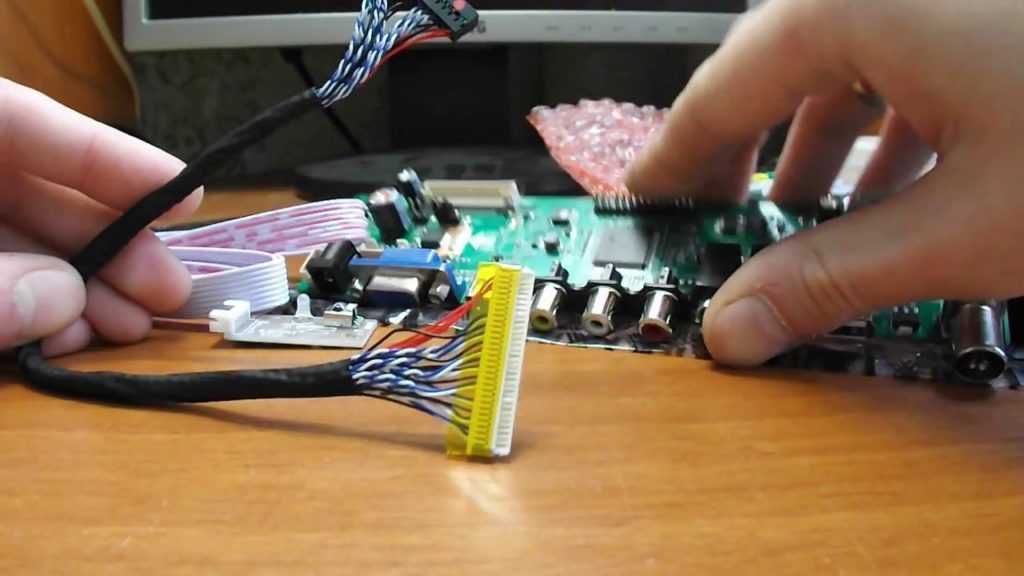
Майн-плата не может работать без подходящего блока-питания с выходным напряжением в 12 В постоянного тока. Его можно встроить непосредственно под корпус монитора, или использовать в качестве внешнего адаптера. После того как плата будет полностью подключена, а ее разъемы ровно лягут на корпус, можно приступить к сбору ЖК-панели.
Однако прежде, чем использовать полученные телевизор по назначению, нужно прошить майн-плату, чтобы она подходила под интерфейс матрицы. В интернете можно найти архив с прошивками для всевозможных вариантов. Как только будет подобран подходящий, его необходимо перенести на флешку, отформатированную в FAT32.
Алгоритм прошивки:
- Отключите питание майн-платы.
- Вставьте USB-носитель с прошивкой.
- Включите питание.
Моргание светодиодов станет доказательством того, что процесс начался. Однако в этот момент главное не допустить выключения питания, иначе скалер придет в негодность. Как только монитор включится, можно приступить к его настраиванию, поскольку это говорит о том, что процедура прошивки была проведена удачно.
Сегодня на китайской торговой площадке AliExpress можно найти хороший универсальный скалер всего за 1 тыс. рублей. За такую небольшую сумму можно не только усовершенствовать свой старый телевизор, но и вернуть к жизни сломанный. К тому же данная деталь поможет сделать телевизор или плеер из любой ЖК-панели с рабочей матрицей.
Chord Hugo M Scaler. Делаем цифровой звук умнее
И вот в июле 2018 первый действующий образец выделенного умножителя разрешения сигнала Hugo M Scaler продемонстрирован на выставке CanJam Лондон-2018. Можно почувствовать мощь интерполяционных алгоритмов Роба Уоттса просто подав сигнал с вашего цифрового источника на один из пяти входов Hugo M Scaler: 2 x коаксиальных BNC, 2 x оптических TOSLINK и гальванически изолированный USB (совместим с частотами включая DSD256).
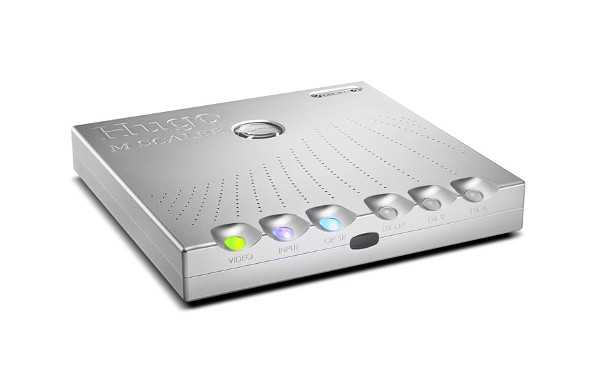
Смартфон или ноутбук? Интернет-плеер (стример)? Проигрыватель компакт-дисков? DVD-плеер или ТВ с цифровым выходом? Chord Hugo M Scaler и его цифровой разум сделают звук любого источника максимально приближенным к идеалу.
А что дальше? Куда подключать M scaler? Есть ли у него аналоговые выходы? Отвечаем: M Scaler — цифровое устройство и выходы у него только цифровые: TOSLINK и BNC. Умножение разрешения для стандартного входного сигнала 44.1 кГц на этих выходах составит до 176.4 и 352.8 кГц соответственно.
Но при этом Hugo M Scaler готов воспринимать и сигнал высокого разрешения. Так на оптическом выходе TOSLINK входной сигнал 96 кГц можно отмасштабировать до 192 кГц, а на электрическом коаксиальном выходе BNC — до 384 кГц.
Формально Hugo M Scaler вошел в линейку настольных ЦАПов и усилителей для наушников Hugo и по формфактору схож с Chord TToby и Hugo 2 TT. Более того эти компоненты можно аккуратно ставить один на другой, чтобы сэкономить место на столе — но всем очевидно, что такой необычный цифровой процессор дополнит любой внешний ЦАП высокого разрешения.
Как и в случае с Chord Blu Mk II, чтобы испытать алгоритмы Роба Уоттса на максимальной вычислительной мощности, нужно соединение с ЦАПом по спаренной линии BNC. На сегодняшний момент такую функциональность обеспечивают ЦАПы Chord DAVE, Hugo 2 TT и Qutest, которые по спаренной линии могут принимать сигнал высокого разрешения 705.6 кГц (на входе M Scaler — 44.1 кГц) и 768 кГц (на входе M Scaler — 96 кГц).
Для совместимости в случае использования устаревших ЦАПов в Hugo M Scaler есть режим подбора частоты дискретизации выходного сигнала под ваш ЦАП. Если пользователь желает включить в тракт повышения разрешения аудиосигнала видеоисточник, то в M Scaler предусмотрен режим «Видео», в котором процессор переходит в режим низкой латентности, чтобы не рассинхронизировался звук с изображением.
Как и в ЦАПах Chord Hugo 2 и Mojo, режимы работы (выбранный вход и частота дискретизации) Hugo M Scaler индицируются разным цветом свечения необычных полусферических кнопок управления. В комплекте также пульт ДУ.
О сроках выпуска новинки и появлении в продаже в РФ будет сообщено дополнительно.
О компании NEXT Hi-Fi
Подробнее о бренде Chord Electronics
СЛЕДУЮЩАЯ НОВОСТЬ
Они прилетели! Флагманские магнепланарные наушники Audeze LCD-4z
ПРЕДЫДУЩАЯ НОВОСТЬ
Marantz укрепляет свою линейку AV ресиверов моделями SR6013 и SR5013: новые функции, больше удобств и улучшенное звучание
|
Главная страница > Новости > Новинки > Chord Hugo M Scaler. Делаем цифровой звук умнее
Tech Inside
Upsampling
In short, The Hugo M Scaler is a standalone upscaling device that acts as the first port of call for any digital audio source or transport such as a laptop or CD Player. It then sends the resulting upsampled digital signal to the DAC of your choice for decoding into analog.
The upsampling technology first saw the light of day on their flagship BLU MKII digital/CD transport launch a year or two ago so it is not an entirely new line of technology from Chord. However, it is officially Rob Watt’s most advanced version at the time of writing and their first such standalone device to focus solely on upsampling.
Process
The M Scaler uses a complex Xilinx XC7A200T FPGA with 740 DSP cores to create WTA (Watts Transient Alignment) filtering capable of upsampling digital streams from 44.1k up to 705.6kHZ (maximum of 768kHz).
DACs such as the Hugo 2 and Qutest actually share the same initial stage of converting a digital signal as the M Scaler, (upsampling). Duplication? Not quite because by using the M Scaler to bypass the initial stage or WTA 1 this is seen as a considerable upgrade on their stock stage 1 DAC process.
That is quite important as virtually all DAC’s have some element of upsampling but perhaps not as complex as the M Scaler. Therefore, regular DAC upsampling interpolation or resulting resolution may not be as accurate compared to the M Scaler output. That upscaled signal is then finally sent to the connected DAC which recognizes it in its new upsampled state rather than the original source rate.
Modular Benefits
By ‘outsourcing’ the process to a dedicated component, not only are Chord able to dedicate all the power required by the M Scaler’s internal FPGA but they, in turn, can build a modular system that is properly equipped at reducing any noise from those additional power demands.
The M Scaler is also not restricted to any single source such as a CD player. It can be attached to any compatible transport and DAC. It has the functionality to pair with any USB-capable output such as a laptop but ideally, it works best with a Chord Electronics DAC for a few reasons.
Chord DACs
Pairing with Chord DACs is not just sales speak in favor of Chord products. Whilst you can link the M Scaler to any DAC, the inclusion of dual BNC connectors means you can directly link 2 BNC cables to the likes of the DAVE, TT2, and the Qutest (which we have here), and all will recognize the M Scaler and respond accordingly.
A dual BNC connection will also give you the highest rate of sampling possible at PCM 768kHz (from 96kHz input). Other single BNC DACs will tap out at PCM 352.8 kHz.
Of course, you are not limited to BNC input and outputs with the M Scaler. You can also use an optical and coaxial output as well as 2 optical inputs giving you the potential to link up to 4-5 different sources to the M Scaler and upsample and output to 3-4 different DACs.
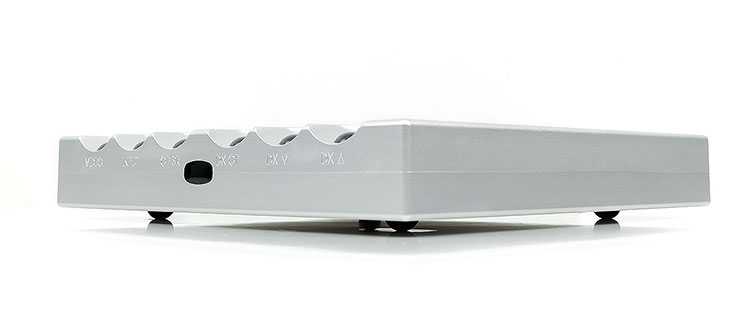
Проблема вторая – скалер не прошивается
Разработчики мудро поступили – для прошивки скалера под подключенную матрицу необходимо на флешку загрузить файл прошивки, флешку вставить в разъем USB на скалере, включить скалер. Скалер поморгает светодиодами на подсоединенном к нему пульте управления и загрузит прошивку в свою память. Я так и сделал. Нашел подходящий файл для матрицы. Все файлы прошивки имеют одно и тоже имя: LAMV29.bin. Сделал все по инструкции. НЕ ПРОШИВАЕТ. Светодиод на флешке мигнет один раз, типа подключился, а обмена данными нет. Стал искать решение в Интернете. И только в ОДНОМ (!) месте эта проблема была описана. Вот здесь: http://4pda.ru/forum/index.php?showtopic=776727&st=6560
Цитирую дословно описание: … затем нужную прошивку переименуйте в YDGV29.bin
Переименовал файл, повторил процедуру загрузки. Прошивка загрузилась. Экран полностью заполнился изображением, геометрия правильная.
Прошивку не публикую, т.к. она строго индивидуальная под определённую матрицу.
В интернете можно найти под любую матрицу. Главное – это правильное переименование файла.
Connections
The Hugo M Scaler is designed to be the first stop digital processor from whatever transport you are using and before the source signal is decoded to analog by a DAC.
So long as you have an outgoing connection either via USB, coaxial or optical then the setup is entirely up to you and the system you have. Just remember to keep your input selector on the automatic input pink color orb option so you can move quickly between multiple sources.
We would say, however, a USB/dual-BNC input/output is likely to yield the most beneficial results given its ability to transmit at a higher rate than optical.
Setup
For the review, we opted for a Windows 10 Acer Nitro setup, Roon and Foobar2000. File playback was in FLAC from 44.1K up to DSD512 as well as a selection of video streamed or on external storage.
From the Qutest we have our analog signal initially connected to the Auris HA-2SE and Xi Audio’s Formula S. However, we found that electrostatic amplification and electrostatic headphones to be the most impressive with the M Scaler.
Outside of electrostatic headphones, we focused on using the excellent Diana Phi or Hifiman’s Susvara which are two planar headphones I believe can best capture the way the M Scaler changes the presentation.
We do have one other highly capable upsampling device, the NuPrime CDP-09, which is primarily a DAC and CD Player but does have some switchable sample rates. You will find out direct comparison also on page 2 of the review.

Design
The M Scaler is unmistakably a Chord Electronics product. There is a certain ethos, design flow if you will, for any Chord Electronics gear from the Mojo up to the DAVE and the M Scaler is no different.
Well, it has to be that way to fit neatly on top of a TToby or TT2 which is how the team has envisaged this all comes together. For those that are coming from a Hugo or Hugo 2, it is a bit like having a giant version of that design, the two are not that far off.
It is also extremely robust with a very high level of build quality. The silver-finished chassis, much like the Hugo 2 is carved from an aluminum block and consists of two parts adorned with 4 rubber feet on the base and held together with 4 discreet screws.
Front
The front houses the same color orb scheme as the Hugo 2 also, although on a more complex level. From left to right there are options for Video filtering, input selection, sample rate as well as 3 DX choices which only come alive when they receive a sample rate (DX OP) or, as Chord Electronics has alluded to when connected to future product lines that have yet to be revealed.
Input Selection
The Hugo M Scalers input selection on the left is color-coded with up to 7 color options. Two of these options are more of an auto-select and the rest a manual selection. Those two are coded pink for automatic and blue for automatic Dual BNS.
Basically, if you set the M Scaler to pink it will default to whatever source is currently connected and active without you having to worry about chopping and changing. Pink will be the default input selection for the majority of systems. The remaining manual sections are as follows:
- White – USB
- Orange – BNC 1 input
- Red – BNC 2 input
- Green – Optical 1
- Dark Blue – Optical 2
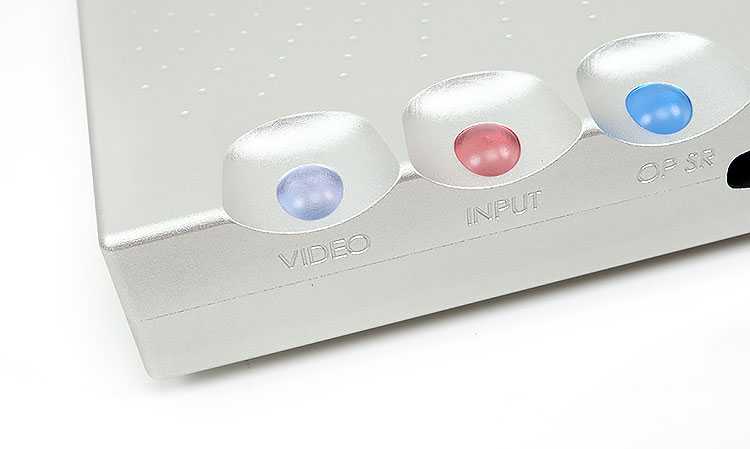
Sampling Rates
The switchable sample rate or OP SR is your key button on the M Scaler for audio playback. Here you can select from 4 core options and they are also color-coded:
- Red – low
- Green – medium
- Blue – high
- White – maximum
The designations are a little crude but it is more a high-level interpretation of what to expect. The actual sample rates you will get under each designation do vary with factors such as the input medium, (USB, BNC, or optical) and the output cable (BNC, dual-BNC, and optical).
For reference purposes, only Dual-BNC output will give you the top rate of 768kHz output. Optical output has a maximum upsampling capability of 176.4kHz which is logical considering you cannot go further than 24/192 on an optical interface. If you are using hi-res files already, (24/192), the benefit of using optical output upsampling is marginal to none.
If you elect to use a single BNC input or single BNC output to a 3rd party DAC then the maximum sampling rate is capped at 352.8kHz input and 384kHz output. Even if your input is USB and your output is a single BNC then the output rate is the same. This is the benefit of going Dual-BNC with Chord’s own DACs which can receive a Dual-BNC cable input.
Video Filtering
Just a note on the far-left video filtering feature which is slightly different from the core switchable sample option. You will not get quite the optimal tap length and sample rate output using video because of the latency inherent in the upsampling process.
The video feature thus lowers the sampling marginally to achieve a proper sync with audio and video from your source file. Having tried that using YouTube and some high-bit rate local storage video files I can confirm it does exactly that.
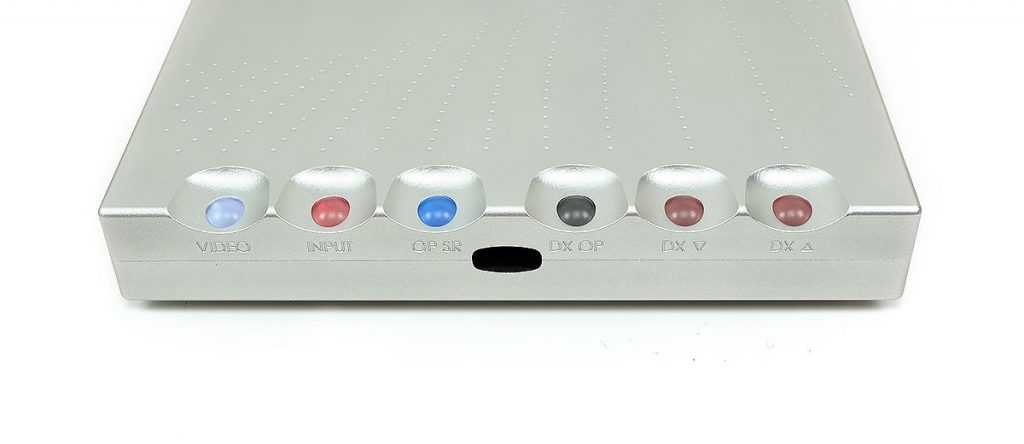
Lighting
One other function, and one that Chord Electronics product users often find necessary is the ability to dim those orb lights. You can dim or enhance the orb light strength via the last two DX buttons. Generally speaking, I tend to take them all the way down so they do not distract me when watching a movie or streaming.
The Orb light sequence works in much the same manner as the Hugo or Qutest and with dual BNC I have found our Qutest to match the color sequences of the M Scaler, particularly for sample rates which are very assuring.
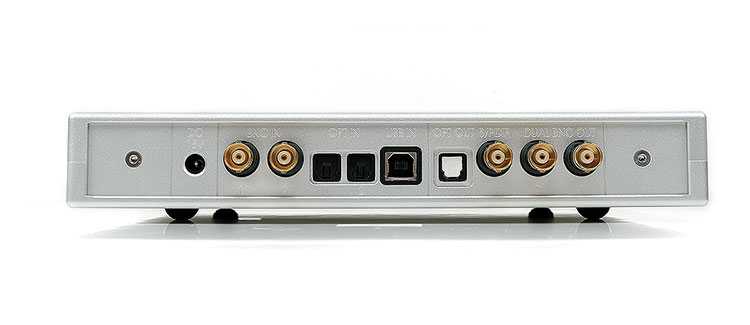
Rear
The rear panel is more of a traditional hi-fi design rather than the inset Hugo 2 style which I do like. Mind you it is not really possible to inset BNC connections and there are 5 coaxial sockets for that, with 4 dedicated for BNC (input and output) and one for SPDIF (output).
The Hugo M Scaler does use a switching 15V/4A SMPS power supply but I am told the power demands are not that high for a desktop product.
In the middle, you have 3 optical ports, 2 for input and 1 for output, and a single USB socket for receiving a digital signal from the likes of your PC or other digital audio transport.
This is my first time working with BNC cables but I am impressed with their locking mechanism. Just a simple push, twist and release and it grips tight. the cables also seem pretty sturdy though not terribly long so you do need your partnering DAC fairly close.
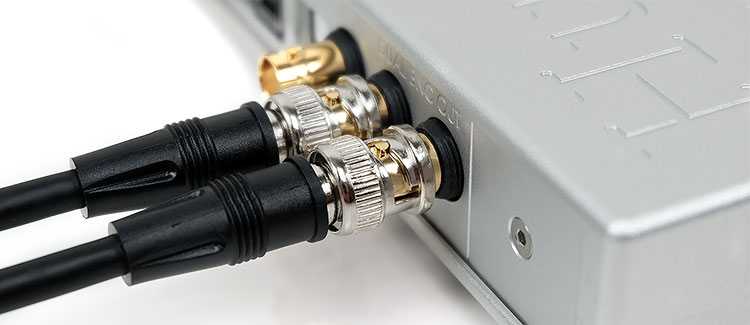
Intro
Contents
- 1. Intro
- 2. Build & Features
- 3. Chord Electronics Hugo 2
- 4. Chord Electronics Qutest
- 5. Chord Electronics Hugo TT 2
- 6. Denafrips Terminator
- 7. PS Audio Directstream DAC (Snowmass)
- 8. Upscaling Impressions
- 9. Vs. Chord Electronics Blu. Mk.2
- 10. Final Thoughts
I’m not a huge fan of upscalers. Many of them sound sterile, overly hyped, and artificial. More importantly, they didn’t make the music sound any less digital. Most often than not- an unadulterated signal is best.
Well, that was until I heard the Chord Electronics Blu Mk. 2 M Scaler a few years ago. In summary, there were no hints of digital while playing music files with this upscaler.
A quick comparison between Roon’s software-based upscaler and the Blu Mk.2 – and you’ll hear what I mean. There’s just more texture, body, and shape to the music. Digital audio has never sounded so informative. Albeit, at a much larger price tag.
So, what exactly makes the M Scaler so special? First, let’s cover some basics on upsampling.
Why Upsampling Matters
With a Red Book recording (CDs), we have 44,100 samples per second at 16-bit resolution per sample. An analog waveform has an infinite number of samples. How shall we do the analog-to-digital conversion? That brings us to the Nyquist Theorem.
The Nyquist Sampling Theorem states that a perfectly bandlimited signal can be sampled and be reconstructed perfectly.
The thing is – a perfectly bandlimited signal doesn’t exist in the real world. Brick-wall and “gentle” filters aren’t perfect – and depending on the input frequencies, will still produce artifacts. Essentially, the theorem isn’t practical.
In this regard, the additional headroom of upsampling comes in handy. When done correctly, the benefits of upscaling are numerous – including the attenuation of artifacts, pre-ringing/echos, and aliasing.
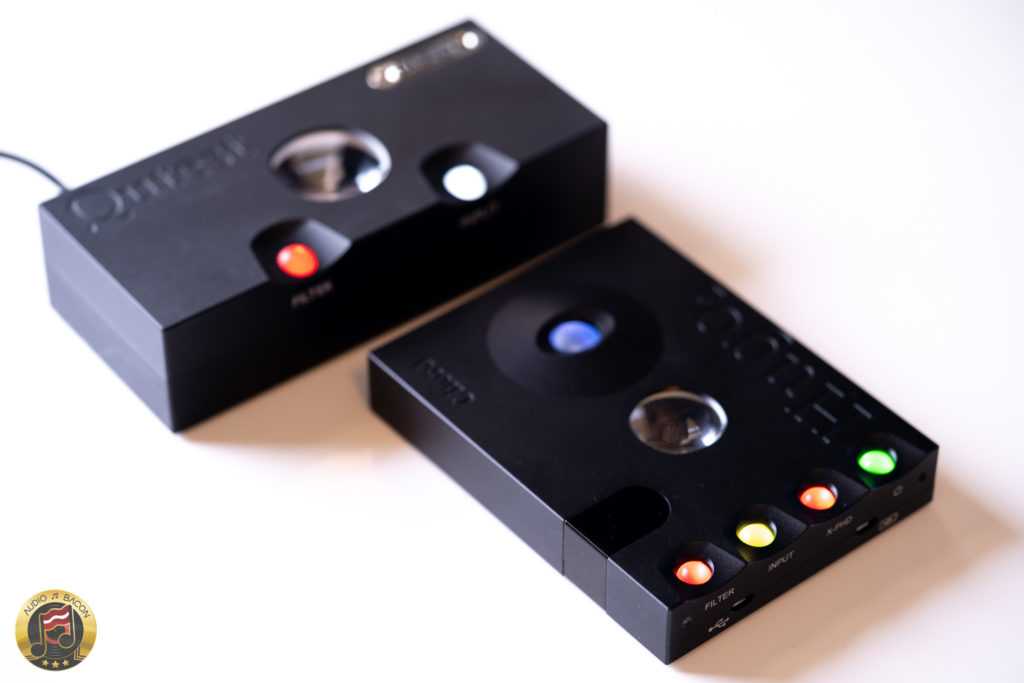
Interpolation
As far as the actual interpolation, most upscalers simply “connect the dots” between sample points. Subsequently, generating points on those lines. On the other hand, the Hugo M Scaler essentially steps back – and takes a holistic look at the waveform. Both forwards and backward in time. Natural waveforms behave within certain bounds – and this approach leverages that fact.
Effectively, instead of using straight line approximation, it interpolates based on the actual waveform. This approach (theoretically) should perfectly reconstruct the original waveform – providing analog-like resolution, proper timbre, and accurate timing in transients.
As you know, the human ear error is very sensitive to timing errors. Consequently, in order to accomplish this, a powerful FPGA and a million lines of code were required. And that is the heart of the Hugo M Scaler.
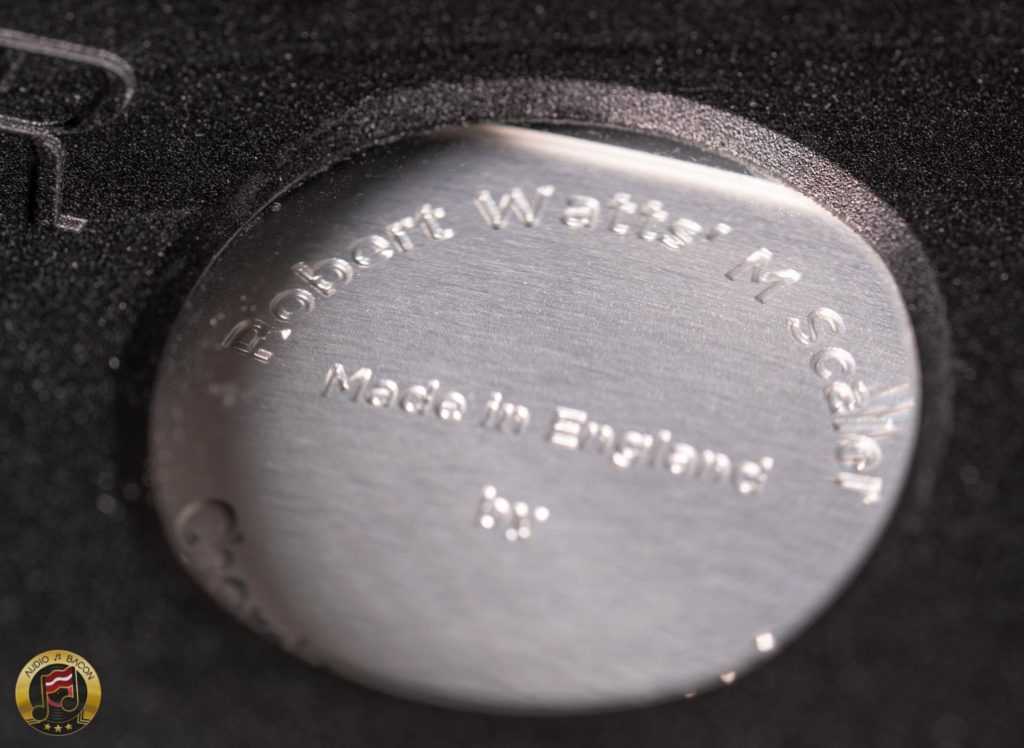
The Chord Electronics Hugo M Scaler
The Chord Electronics Blu Mk.2 revolutionalized how audiophiles were listening to their digital library and CDs. Unfortunately, the Blu Mk.2 is prohibitively expensive for many (~$11,000 USD).
Rob Watts, Chord Electronic’s digital designer/consultant, wanted to get the M Scaler technology into more ears. He wanted a more compact version without compromises. Fast forward another year – and the Chord Electronics Hugo M Scaler was born. This time without a CD player – and in tabletop fashion.
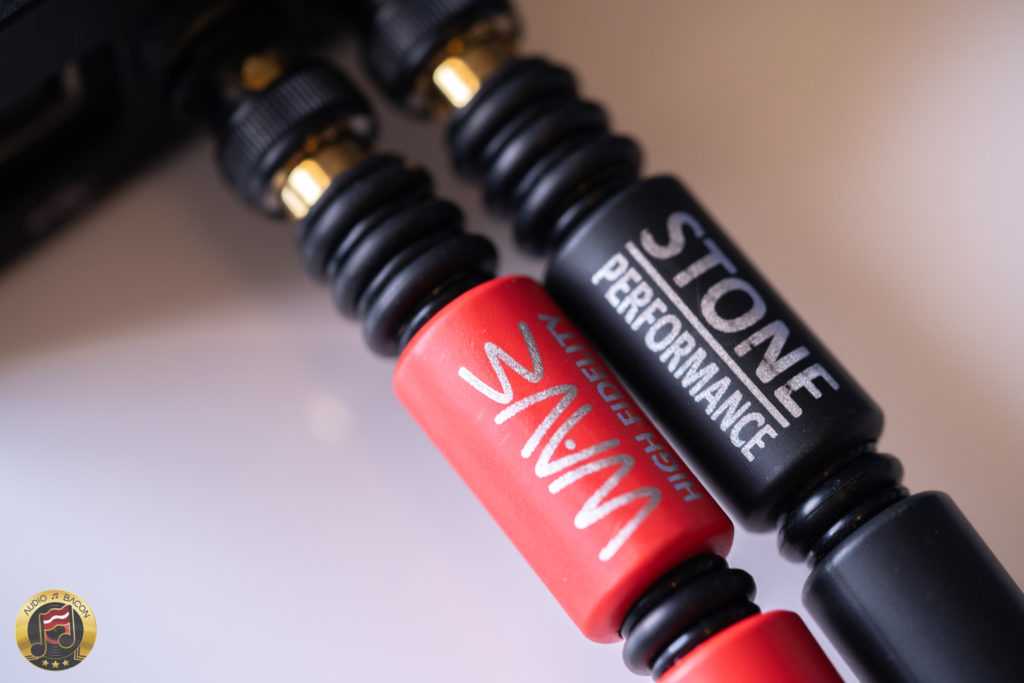
The Hugo M Scaler works with any DAC with compatible inputs. You’ll be able to upscale your 44.1kHz/16-bit files to 705.6kHz/24-bit. In addition, it’s able to deliver a ridiculous 768 kHz/24-bit PCM signal in dual-BNC mode – with a compatible Chord Electronics DAC.
Please take a look at my review and this white paper for more details on the Watts Transient Aligned (WTA) filter M Scaler technology. I’ll be focusing primarily on listening tests.
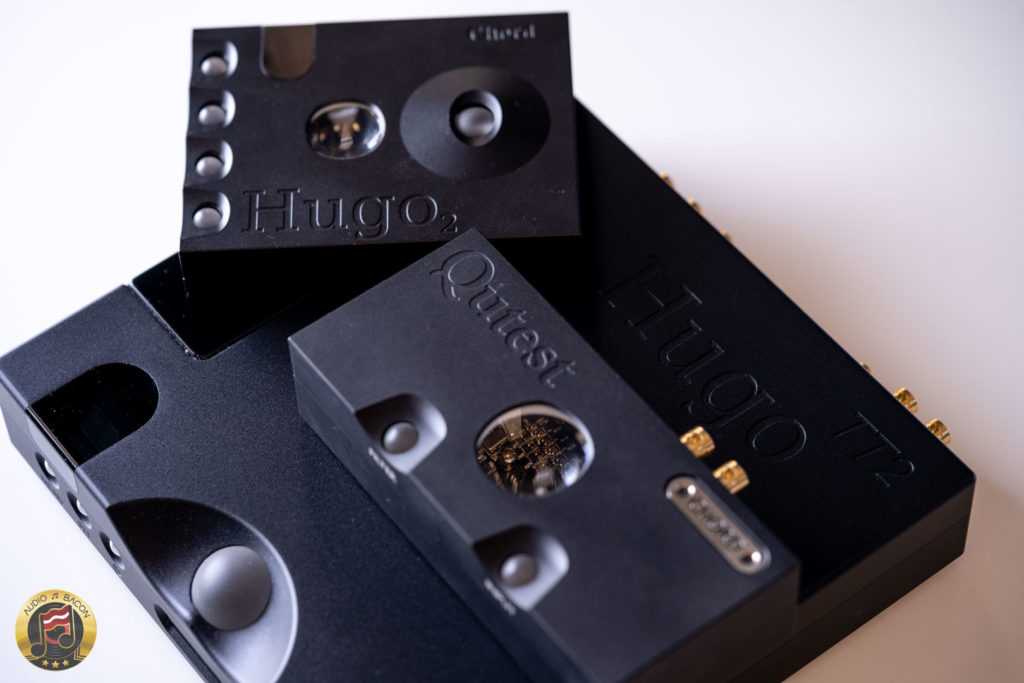
Dual BNC (DBNC) Compatible Chord DACS:
- Qutest
- Hugo 2
- Hugo TT 2
- DAVE
In addition to a few other DACs, I’ll be going over listening impressions for all of these Chord Electronics DACs. I’ve had the Hugo M Scaler for many months and have taken notes over an enormous amount of equipment flux (different amps, cables, headphones, etc). I’m glad to report – the performance of the Hugo M Scaler was consistent throughout.
| DAC | Taps |
|---|---|
| DAC 64 | 1,024 |
| QBD76 | 18,000 |
| Hugo/TT/2Qute/Mojo | 26,000 |
| Hugo 2 / Qutest | 49,152 |
| TT 2 | 98,304 |
| DAVE | 164,000 |
| Blu Mk.2 / Hugo M Scaler | 1,015,808 |
Upscale Digital to 16 Times the Native Resolution of CD: British-Built Chord Electronics Hugo M Scaler Delivers 705.6kHz, Features FPGA-Based Filtering and Stellar User Interface
The world’s most cutting-edge digital filter resides inside The Absolute Sound Product of the Year and Golden Ear Award-winning Chord Electronics Hugo M Scaler, a tabletop upscaling device that revolutionizes the sound of digital music. Able to upscale 44.1kHz up to 705.6kHz – 16 times that the native resolution of CD – with most DACs, it takes such monumental technical capability up to 768kHz with Chord Electronics’ dual-BNC-input Qutest and Hugo TT 2 models. FPGA-based WTA filtering technology, fascia-mounted controls, an adjustable sample-rate output, and a spate of inputs and outputs further allow the British-built Hugo M to stand alone in the field. Chord Electronics’ three-year warranty and Music Direct’s 100% Satisfaction Guarantee pile on the spoils of a component without equal.
«The Hugo TT2/M Scaler pair extracts shocking amounts of beneficial musical information from standard and hi-res files alike. Sonic benefits include reduced congestion, purer timbres, sharpened focus and resolution, greater pitch definition, more incisive transients, heightened levels of dynamic expression, and larger and more realistic soundstage.»
— The Absolute Sound, 2019 Golden Ear and Product of the Year Awards
«It replaces the various reconstruction filters used in other manufacturers’ DACs with Rob Watts’s enormously long WTA filter. That filter does sound superb, and, as a bonus – in addition to upgrading the sound of older DACs – the M Scaler adds a USB input with Roon compatibility to older DACs that don’t have one, like my expensive Levinson.»
— John Atkinson, Stereophile
FPGA-Based WTA Filtering Technology for Sublime Sonics
Hugo M brings the unrivaled advantages of groundbreaking FPGA-based WTA (Watts Transient Alignment) filtering technology to digitally connected audio devices, dramatically improving sound quality. Although optimized for use with selected Chord Electronics DACs (for the maximum 768kHz upscaling/decoding benefit), Hugo M can be used with other DACs with suitable inputs, subject to their decoding capability.
Compact Form Factor, Modernized User Interface
Hugo M’s compact form factor aligns with Chord Electronics’ TT (tabletop) series and has been designed to be stackable with other units in the range, including the the Hugo TT 2, to form a highly advanced yet space-saving system. In line with other models in the Hugo and Hugo TT series, the device features a number of illuminable fascia-mounted spherical controls, governing input selection, output sample rate and video mode for lower latency. The control spheres display data visually including input source and the incoming sample rate, using a polychromatic scale.
The Right Setup
The gestation period for this M Scaler review has been long, perhaps almost too long. However, the upshot is a degree of familiarity with the capability of this device almost like no other before putting pen to paper.
That is a critical point because if you simply plug the M Scaler into a DAC, turn on your amp and connect some headphones you may not necessarily get what the big deal is at first. That initial listen might not reveal what the magic is. That, combined with the top-tier pricing, might leave you feeling underwhelmed.
I had that initial issue during CanJam Singapore 2019 with a set of HE5SE’s from Hifiman plugged into a TT2 with the M Scaler right behind it. The HE5SE is not a reference headphone and its old-school technical capability leaves much to be desired in terms of imaging. Its timbral qualities are appealing, technical capability less so.
Picking the right setup, the right headphone and tracks you know and understand is critical to overcoming that first hurdle. The Hugo M Scaler is not a quick fix timbral choice. It is not an EQ tool nor will it redefine the core FR of any headphone. The secret sauce of the M Scaler lies in the technical domain and in that domain it can and is utterly brilliant.
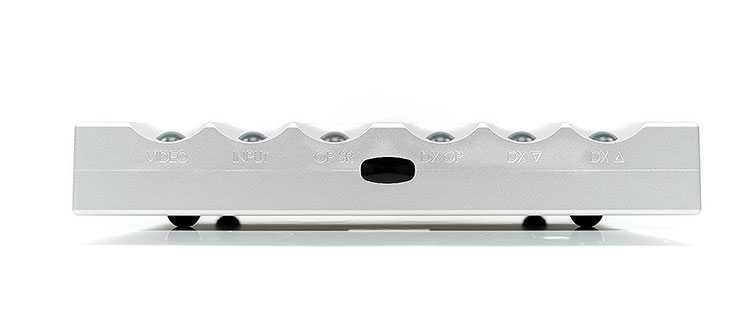
Why Upsampling Matters
With a Red Book recording (CDs), we have 44,100 samples per second at 16-bit resolution per sample. An analog waveform has an infinite number of samples. How shall we do the analog-to-digital conversion? That brings us to the Nyquist Theorem.
The Nyquist Sampling Theorem states that a perfectly bandlimited signal can be sampled and be reconstructed perfectly.
The thing is – a perfectly bandlimited signal doesn’t exist in the real world. Brick-wall and “gentle” filters aren’t perfect – and depending on the input frequencies, will still produce artifacts. Essentially, the theorem isn’t practical.
In this regard, the additional headroom of upsampling comes in handy. When done correctly, the benefits of upscaling are numerous – including the attenuation of artifacts, pre-ringing/echos, and aliasing.

Interpolation
As far as the actual interpolation, most upscalers simply “connect the dots” between sample points. Subsequently, generating points on those lines. On the other hand, the Hugo M Scaler essentially steps back – and takes a holistic look at the waveform. Both forwards and backward in time. Natural waveforms behave within certain bounds – and this approach leverages that fact.
Effectively, instead of using straight line approximation, it interpolates based on the actual waveform. This approach (theoretically) should perfectly reconstruct the original waveform – providing analog-like resolution, proper timbre, and accurate timing in transients.
As you know, the human ear error is very sensitive to timing errors. Consequently, in order to accomplish this, a powerful FPGA and a million lines of code were required. And that is the heart of the Hugo M Scaler.

